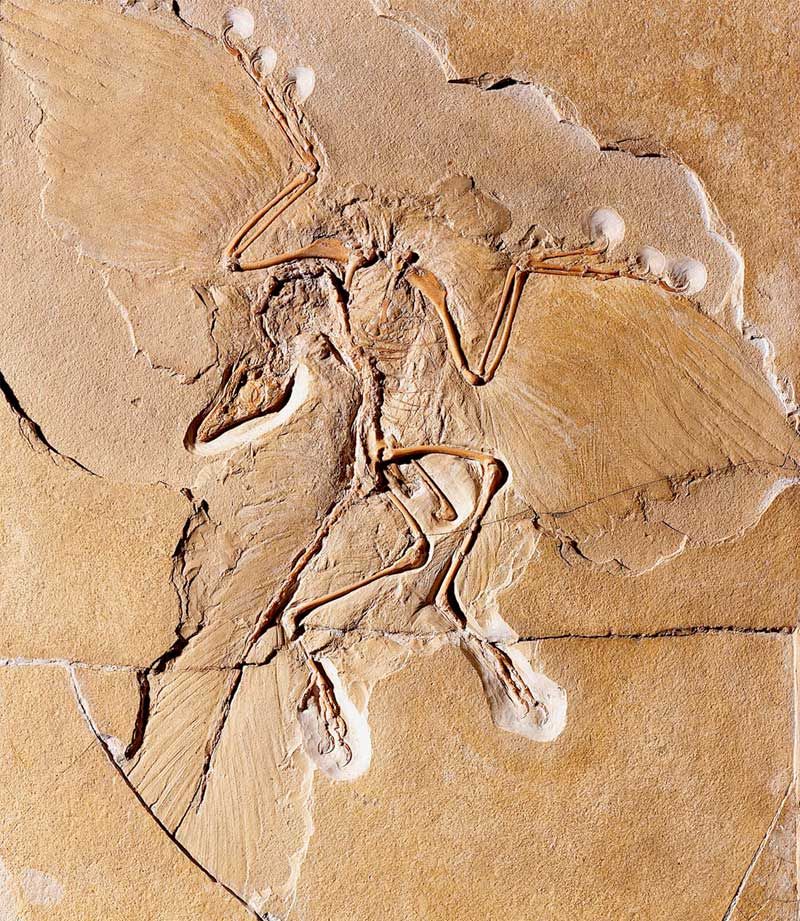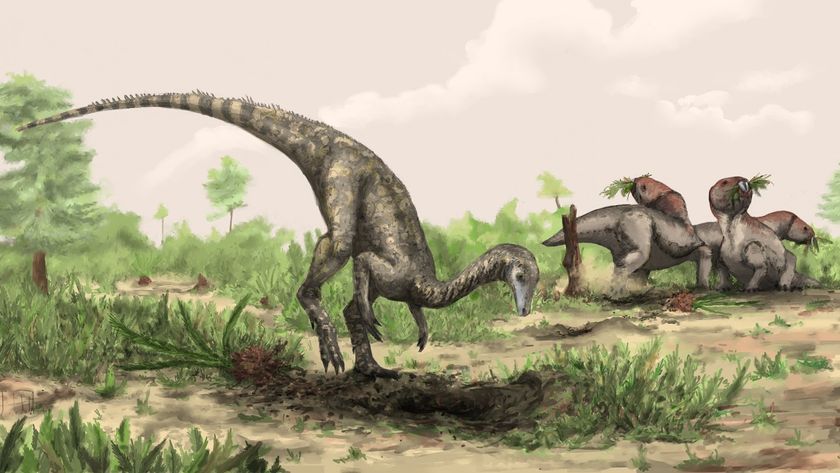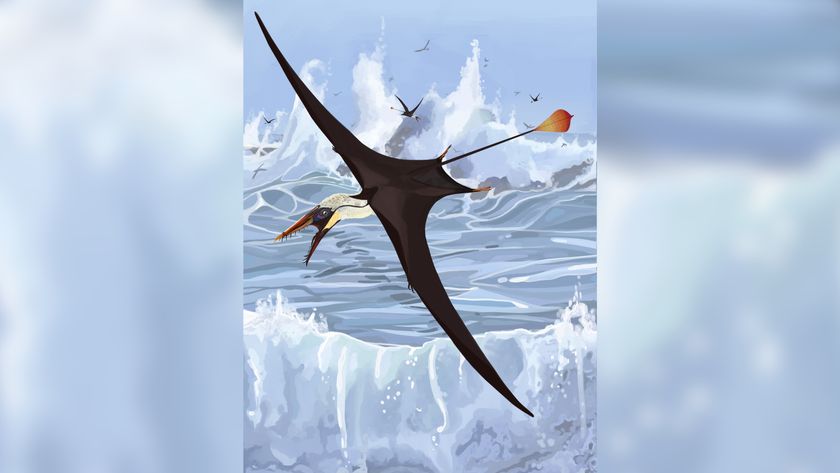Birdlike Dinos Had Tough Time Flying

Some of the first birdlike creatures to emerge during the age of the dinosaurs probably couldn't get their heavy wings to take them off the ground, and they likely opted for gliding over flying, new research shows.
Modern flying birds have a single primary layer of easily separated long feathers covered with short ones — a design that helps them overcome drag when taking flight. A new analysis of the fossils of two of their ancestors shows that the arrangement of feathers for primitive birds was quite different.
The birdlike dinosaurs Anchiornis huxley and Archaeopteryx lithographica had dense overlapping layers of wing feathers that were likely difficult to separate, the researchers found. Instead of lifting off from the ground, these creatures probably climbed trees and used their wings to glide from a height, the scientists said.
What's more, differences in the wing feathers of Archaeopteryx and Anchiornis appear to represent early evolutionary experiments in wing design, according to the researchers. For example, Archaeopteryx had multiple layers of long feathers, while Anchiornis had an abundance of simple feathers that overlapped like a penguin's, said study researcher Nicholas R. Longrich, a postdoctoral fellow at Yale.
Longrich's colleague Jakob Vinther, a former Yale doctoral student, now with the University of Bristol in the United Kingdom, said the fossil analyses add to an intricate picture of how feathers and modern birds evolved.
"We now seem to see that feathers evolved initially for insulation," Vinther explained in a statement. "More complex vaned or pinnate feathers evolved for display. These display feathers turned out to be excellent membranes that could have been utilized for aerial locomotion, which only very late in bird evolution became what we consider flapping flight."
The research was detailed today (Nov. 21) online in the journal Current Biology.
Sign up for the Live Science daily newsletter now
Get the world’s most fascinating discoveries delivered straight to your inbox.
Follow LiveScience on Twitter @livescience. We're also on Facebook & Google+.
Most Popular




